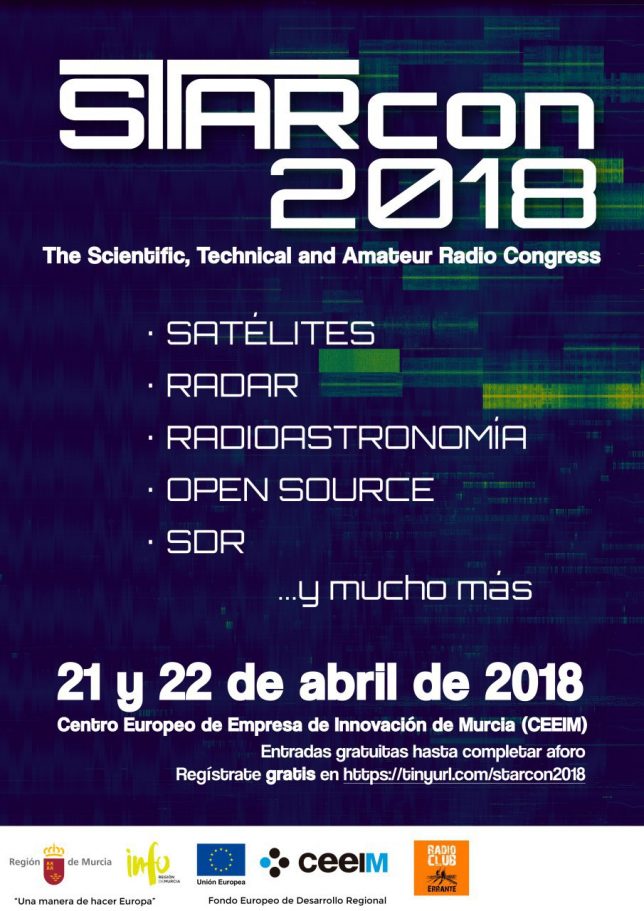English translation below.
Me tomo la libertad de usar este blog para anunciar un congreso que estoy organizando, junto con otros Radioaficionados Españoles. Como se puede ver en la descripción del congreso, la temática del congreso está bastante en línea con el material sobre el que suelo tratar en este blog, así como los trabajos de otras personas a las cuales sigo.
Anuncio del congreso STARcon 2018
Somos un grupo de entusiastas y profesionales de las telecomunicaciones que, ante la falta de una conferencia orientada a los aspectos científicos y técnicos de la radioafición en nuestro país, ha decidido organizarse para dar vida al Scientific & Technical Amateur Radio Congress (STARcon): el primer congreso sobre radio científica y técnica en España.
Desde la organización de STARcon buscamos aficionados, estudiantes y profesionales, apasionados en general que deseen formar parte de esta primera edición, como asistentes o dando una charla. Temas como experimentos mediante radio, filosofía DIY, SDR, open source, seguridad, radioastronomía amateur y diseño de equipos de comunicaciones son bienvenidos.
El congreso tendrá lugar el sábado 21 y domingo 22 de abril de 2018 en el Centro de Empresas e Innovación de Murcia (CEEIM), con un aforo total de 150 personas. Puedes encontrar más información, call for papers y el formulario de registro en la página web del evento.
English translation
I take the liberty to use this blog to announce a conference which I am organizing, together with other Spanish Amateur radio operators. As one can see in the conference description (in Spanish), the topics of the conference are in line with the material I usually deal with in this blog, as well as the work of other people I follow.
STARcon 2018 conference announcement
We are a group of telecommunications enthusiasts and professionals who, due to the lack of a conference oriented to the scientific and technical aspects of Amateur radio in our country, has decided to organise and create the Scientific & Technical Amateur Radio Congress (STARcon): the first conference about scientific and technical radio in Spain.
The organization of STARcon is looking for amateurs, students and professionals, passionate people in general, who wish to form part of this first edition, either as attendants or giving a talk. Topics such as radio experiments, DIY philosophy, SDR, open source, security, radio astronomy and communications equipment design are welcome.
The conference will take place on Saturday 21 and Sunday 22 April 2018 in the Centro de Empresas e Innovación de Murcia (CEEIM), with a capacity for 150 people. You can find more information, the call for papers and the registration form in the event’s web page.



